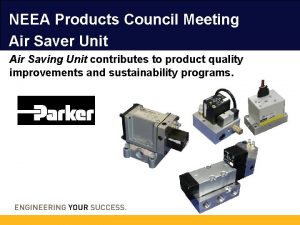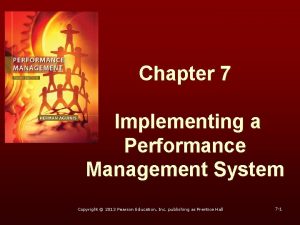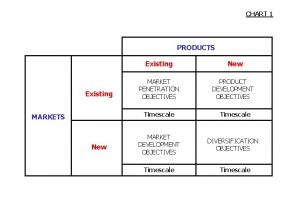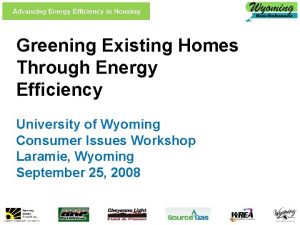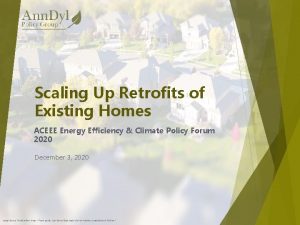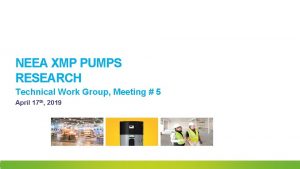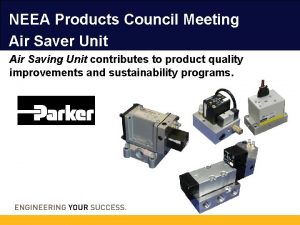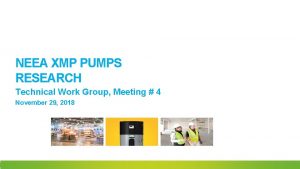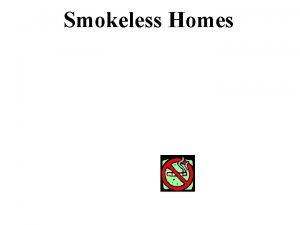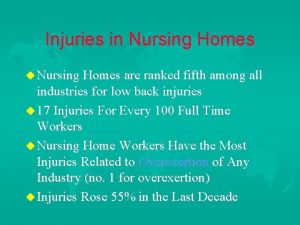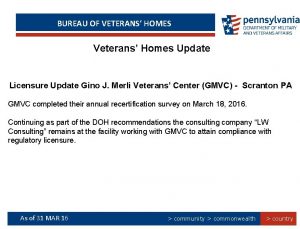Energy Performance Score Pilot for Existing Homes NEEA

























- Slides: 25

Energy Performance Score Pilot for Existing Homes NEEA February 3, 2011

The Energy Performance Score • An asset-based performance metric • A Miles-per-gallon (MPG) for homes • tool for strategic engagement of customers and markets – but only if it can be a reliable – accepted – effective tool in the field • used as a resource to give visibility and awareness to consumers on the performance of their home’s shell and mechanical systems under standard operating conditions

The Energy Performance Score is not • a certification • a program • a guarantee • a cash incentive • an alternative to Home Performance with ENERGY STAR®

Advantages of the EPS • Helps homeowners compare their energy usage with homes of a similar size to theirs • Provides a target score that homeowners can achieve with recommended upgrades • Shows energy use on a scale

How is EPS Calculated? Data Inputs • Home size • Insulation levels • Air leakage • Duct leakage • Heating and cooling systems • Several other factors * Energy modeling assumes average operating conditions. Actual use may vary on number of occupants and behaviors.

Phase 1 Report http: //energytrust. org/library/ reports/EPS_2008_Pilot_Report. pdf

Library/Reports – Search by Existing Homes

Findings from Initial EPS Research 1. Complicated models were no better at forecasting energy savings than less complex models. 2. The best performing non-complex model had an apparent error band of plus or minus 30%. 3. Comparisons to billing data are not the accurate test of a model’s forecasting efficacy, due to homeowner behavior. 4. A set of enhancements to the less-complex energy models might improve accuracy. 5. More tests of improved models in comparison to a standardized baseline (non-bill) should be conducted.

Next Phase EPS with DOE’s HES

Goals of the EPS Pilot • • • Does an EPS motivate a customer to act, in terms of sooner, deeper or both? • Which information is most useful • Score or no score, energy usage & savings representation • How do consumers relate carbon footprint information • What are the customers’ visual preferences Does an EPS have efficacy in: • Directing customers to do the right sorts of things • Assigning a comparative ranking without diagnostic testing • Predicting energy saved without diagnostic testing • Which of three models perform better (HES, SIMPLE and RHA 2) What is ease of use in the field for the three models

EPS Next Steps • Continued vetting of visual score for consumer preferences on look, feel & content • Further analytic review of alternative approaches – SIMPLE 2. 0 – Real. Home. Analyzer 2 (RHA 2) – DOE’s Home Energy Score (HES) • Impact of home performance scores on influencing home improvement follow through rates

Pilot Overview • 400 gas homes in total will get an assessment with a score – – 200 Homes provided DOE’s HES (Score & Recommendations) 200 with Real. Home. Analyzer 2. 0 EPS (Score & Recommendations) All homes will be modeled with SIMPLE as well Standard HERs will be used as benchmark for follow through rates • Feb launch, March-April analysis (consumer surveys 1 week & 6 months) • BPI certified technicians as Energy Advisors (5 dedicated) –For this effort Advisors are from the PMC* • Training (HES, RHA, Call Center, Contractors) • Homes will be randomly assigned from the requests for a Home Energy Review (free checklist audit) *PMC: Program Management Contractor Conservation Services Group

Overview (Continued) • Home energy score provided to homeowner on site –Recommendations sheet –Packet of materials 1. 2. 3. 4. List of Trade Allies List of Incentives Measure fact sheets based on recommended measures Energy Advisor business cards –Follow-up with 2 surveys (1 week & 6 months) • Not doing a blower door test Leakage will be assigned based on advisors assessment of multiple characteristics of home including visual inspection (values are based on multiple historic leakage rates, home size, foundation, age, number of stories)

Energy Performance Score

Recommendations Report

US Department of Energy’s Home Energy Score (HES)

Energy Trust is One of Ten Home Energy Score (HES) Pilots under DOE 1. 2. 3. 4. 5. 6. 7. 8. 9. 10. Allegheny County Pensylvania, Efficiency PA Cape Cod and Martha's Vineyard, Cape Light Compact Colorado Mountain Region, Energy Smart Program Greater Charlottesville area, Virginia, Local Energy Alliance Program Indiana, Hoosier Energy Minnesota, Center for Energy & Environment Omaha and Lincoln Nebraska, Cities of Omaha and Lincoln Portland Oregon, Energy Trust of Oregon South Carolina, Electric Cooperatives of South Carolina Texas, United Cooperative Services www. homeenergyscore. gov

Home Energy Score (HES) • An asset-based performance metric is produced with US DOE’s Home Energy Saver (HES) Pro • Scale from 1 to 10, with current score and score after upgrades, along with estimated annual savings • Comparison home score is from national RECs data • Includes total source energy use (MBTUs/year) and home size • Includes Tips to Save Energy at Home, Home Upgrade Recommendations, and Summary Page of Inputs • Pilots to provide recommendations reports to DOE by June 2011

Home Energy Score Label • INSERT PICTURE OF LABEL

Why an HES Pilot Also? • Comparing multiple modeling tools, of which DOE’s HES is one • Comparing consumer response to different visual representations • Opportunity to provide recommendations to DOE to improve HES

Timeline • • Launch in February 2011 All homes scored by early April Preliminary evaluation in early summer 2011 Contractor roll-out late 2011/early 2012 – contractor engagement starts in January – depends on results of tool comparison – and preliminary follow through rates

Pilot process

Questions • Customer follow-through rates on measure installation – Pull project data from our efficiency project database at the following intervals (1 month, 3 months, 6 months & 1 year) – Compare to standard Home Energy Review follow-through rates • Data analysis & metric comparisons – – – Relative accuracy of HES, SIMPLE and RHA 2 Comparison to each other and other models (SIMPLE) Use of billing data Actual blower door comparisons on sub sample Look at different benchmarks (SEEM data) vs (RECs)

Questions (Continued) • Customer feedback surveys (multiple questions) – – Participants will be surveyed electronically (1 week & 6 months) Actions taken (behavioral change, small measures (CFLs)) Satisfaction & value of Energy Advisor in the process Visual score inquiry (scale, energy data representation) • Program delivery efficiencies & customer information – – – Tablets and printers on site Scripted conversations for message consistency Automatic randomized site selection and advisor assignment Timing of activities (audit time, scheduling, printing etc) Demographics (more detail on occupants)

Contacts Diane Ferington Energy Trust of Oregon Residential Sector Lead Diane. Ferington@energytrust. org 503. 445. 7621 Kendall Youngblood Energy Trust of Oregon Residential Sector Manager Kendall. Youngblood@energytrust. org 503. 445. 7622 PMC Leads @ CSG Stephanie Vasquez New Initiatives Program Manager Stephanie. Vasquez@csgrp. com 503. 523. 4836 Kyle Barton Program Analyst EPS Field Lead Kyle. Barton@csgrp. com 503. 307. 3710
 Neea valve
Neea valve Neea digital
Neea digital Neea hintan koulu
Neea hintan koulu Pilot testing in performance management
Pilot testing in performance management Energy energy transfer and general energy analysis
Energy energy transfer and general energy analysis Energy energy transfer and general energy analysis
Energy energy transfer and general energy analysis When to use t score vs z score
When to use t score vs z score T score versus z score
T score versus z score Mudaliyar commission
Mudaliyar commission Similarity of ending sounds existing between two words
Similarity of ending sounds existing between two words Erd for gym management system
Erd for gym management system Cima detailed record of experience
Cima detailed record of experience Living not existing
Living not existing Hipaa pre-existing condition protections
Hipaa pre-existing condition protections Refactoring: improving the design of existing code
Refactoring: improving the design of existing code Organizational structure of pnp
Organizational structure of pnp Market penetration chart
Market penetration chart American society of mechanical engineers
American society of mechanical engineers How securities are traded
How securities are traded Mark receives a score report detailing his performance
Mark receives a score report detailing his performance Kontinuitetshantering
Kontinuitetshantering Novell typiska drag
Novell typiska drag Nationell inriktning för artificiell intelligens
Nationell inriktning för artificiell intelligens Vad står k.r.å.k.a.n för
Vad står k.r.å.k.a.n för Shingelfrisyren
Shingelfrisyren En lathund för arbete med kontinuitetshantering
En lathund för arbete med kontinuitetshantering
